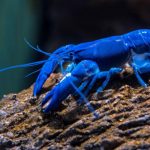Have you ever wondered where do penguins live? These amazing birds live mainly in the Southern Hemisphere. They call places like icy tundras and warm sandy shores home. To get to know them better, we need to learn about their penguin habitat.
Penguins don’t live alone; they live in big groups called rookeries. These groups can have thousands of birds. Most penguins live near the coast, but some, like the Galapagos penguin, live in tropical areas. This shows how diverse their penguin primary habitats are.
Looking into penguin home ranges helps us see how important they are to the environment. They play a big role in both the sea and on land. This shows how they keep their homes in balance.
Penguin Species and Their Habitats
Exploring the different penguin species helps us understand their unique homes and how they adapt. These birds show a wide range of traits, letting them live in various places around the world.
Overview of Penguin Species
There are 18 penguin species, mostly found in the Southern Hemisphere. The emperor penguin can reach up to 115 cm tall, while the little penguin is only 35 cm. They vary in how they live, from cold climates to warmer ones, showing their adaptability.
Geographic Distribution of Penguins
Penguins live mainly around Antarctica. Species like the emperor, adélie, chinstrap, and gentoo penguins are key to the Antarctic ecosystem. The Galapagos penguin lives near the equator in warmer weather. The African penguin is found in South Africa’s coastal areas. Their homes are shaped by climate and food, affecting where they can live and breed.
| Penguin Species | Habitat Location | Average Height (cm) | Temperature Preference |
|---|---|---|---|
| Emperor Penguin | Antarctica | 115 | Cold |
| Adélie Penguin | Antarctica | 70 | Cold |
| Gentoo Penguin | Antarctica | 80 | Cold |
| Chinstrap Penguin | Antarctica | 68 | Cold |
| Galapagos Penguin | Galapagos Islands | 50 | Warm |
| African Penguin | South Africa | 60 | Warm |
Where Do Penguins Live?
Penguins live in unique places that help them survive. They are found in different environments, not just in cold places. This section looks at where penguins call home.
Common Areas Where Penguins Thrive
Penguins live where they can find plenty of food and stay safe from predators. They like these places:
- Ice-covered Zones: These are their main homes, especially in Antarctica.
- Rocky Shorelines: Many penguins nest on rocky coasts for shelter.
- Sub-Antarctic Islands: Islands near Antarctica are perfect for them because of the food.
- Temperate Beaches: Some penguins live in warmer places on sandy shores.
Penguins spend a lot of time in the water. They go to icy waters to find fish and other food. Knowing where penguins live helps us protect their homes for the future.

| Penguin Species | Primary Habitat |
|---|---|
| Emperor Penguin | Antarctica’s ice-covered regions |
| Adelie Penguin | Antarctic coasts and islands |
| Chinstrap Penguin | Sub-Antarctic islands |
| Humboldt Penguin | Coastal Chile and Peru |
| Magellanic Penguin | South American coasts |
Penguin Environments and Adaptations
Penguins have amazing adaptations that let them live in different places. These changes help them move well in their homes. Learning about their features and how they eat helps us understand how they survive in tough places.
Physical Adaptations for Habitat
Penguins can’t fly, but they have special traits that help them live in their homes. Here are some key changes they have made:
- Flippers: These are perfect for swimming, letting penguins move through the water with great skill.
- Insulating Feathers: They have waterproof feathers that trap air, keeping them warm in cold water.
- Body Shape: Their body shape cuts down on drag when swimming, helping them swim fast.
- Fat Layer: A thick layer of fat also protects them from the cold.
Feeding Habits and Diet
Penguins eat different foods based on where they live. Their way of eating is key to their survival, especially in different places. Here are some important things about their diet:
- Prey Selection: Adélie penguins eat krill, while those in warmer areas eat various fish.
- Hunting Techniques: Penguins dive deep and fast to catch their food, showing how well they adapt to life in the water.
- Social Feeding: They hunt together, which helps them find more food and avoid competition.
These changes and eating habits show how tough penguins are. They also show how closely they are connected to their natural homes.
Penguin Nesting Grounds
Penguins have unique ways of nesting that help them survive. Each type of penguin has its own way of nesting, showing how well they fit into their environment. Knowing about these nesting grounds helps us understand their needs and how the environment affects them.
Nesting Behaviors of Different Species
Each penguin species has its own way of nesting. Many come back to the same spot every year, showing they like their nesting spots a lot. Males usually get there first to claim their territory. Most penguins mate for life, but some may have more than one mate.
The time they nest also varies. For example, the little penguin breeds quickly, but the king penguin takes up to 16 months. This shows how different their breeding cycles can be.
Characteristics of Penguin Nests
Penguin nests can be simple or complex. Some are just simple holes in the ground, while others use stones, grass, and feathers. Most females lay one to two eggs, but some, like the emperor and king penguins, lay just one.
These nests protect the eggs from bad weather, which is key for the chicks to survive. The size, color, and number of eggs vary by species. Each type is designed to help the eggs survive best in their nesting grounds.
| Species | Nesting Type | Egg Clutch Size | Nesting Period |
|---|---|---|---|
| Emperor Penguin | Huddled chicks | 1 | About 15 months |
| King Penguin | Stones and pebbles | 1 | 16 months |
| Little Penguin | Scrapes in ground | 1-2 | Breeding season varies |
| Adélie Penguin | Stones and feathers | 1-2 | About 3 months |
Threats to Penguin Habitats
Exploring the world of penguins shows us the threats they face. Climate change is a big challenge, making sea ice melt. This is crucial for species like emperor and adélie penguins. The change affects their homes, making it hard for them to survive.
Overfishing also harms penguins. When fish are overfished, penguins struggle to find food. This leads to more deaths among some species. Pollution makes things worse by harming the birds and their food.
To protect penguins, we need to act. You can help by supporting efforts to reduce carbon emissions, promote sustainable fishing, and clean oceans. By spreading the word and taking action, we can help penguins thrive in their homes.










